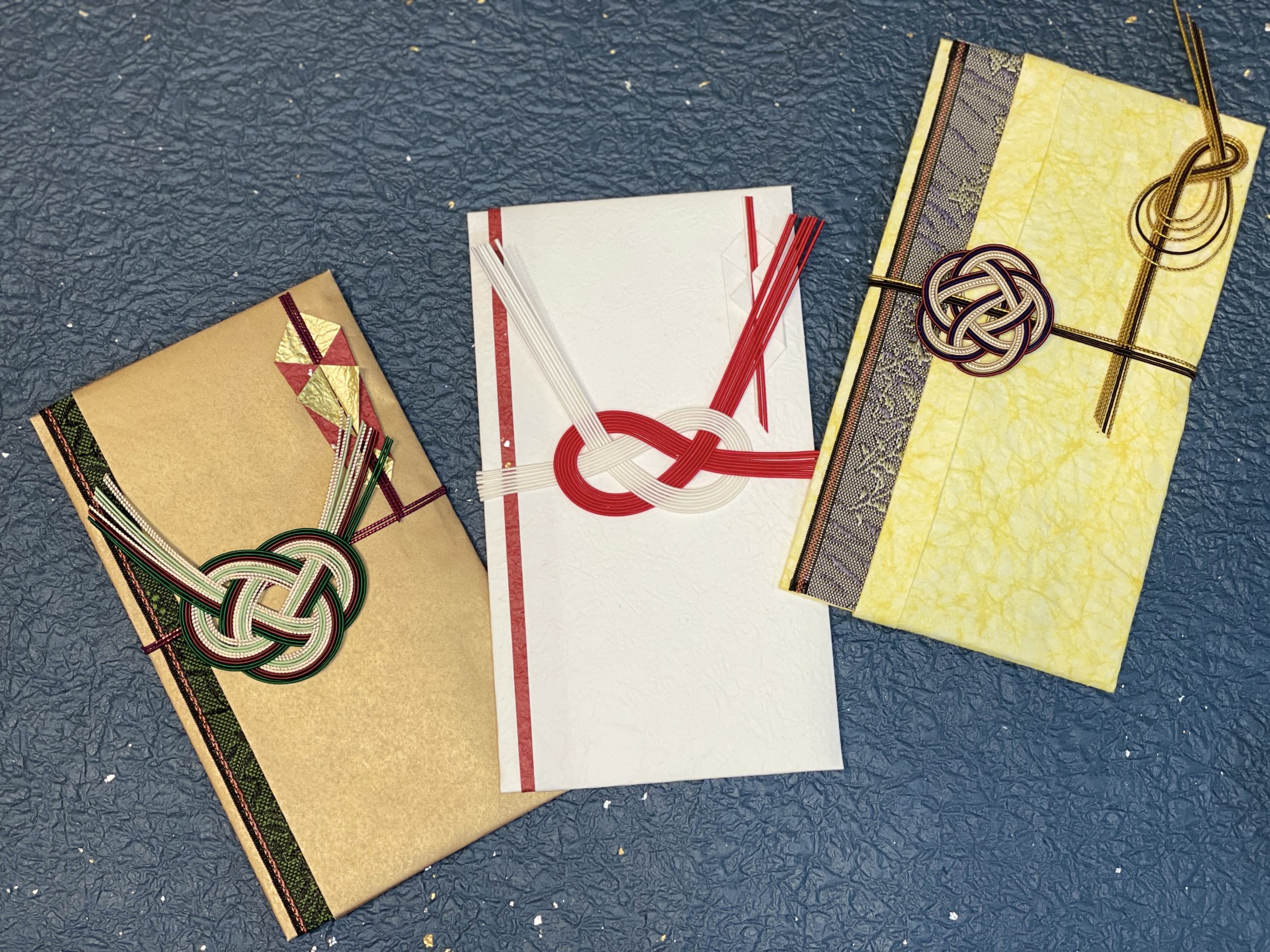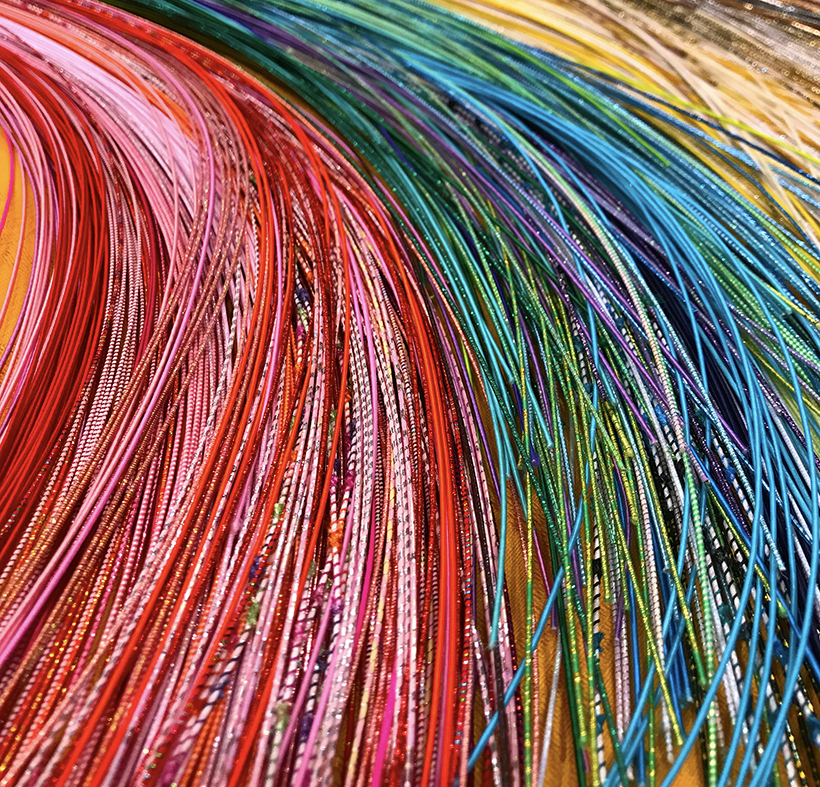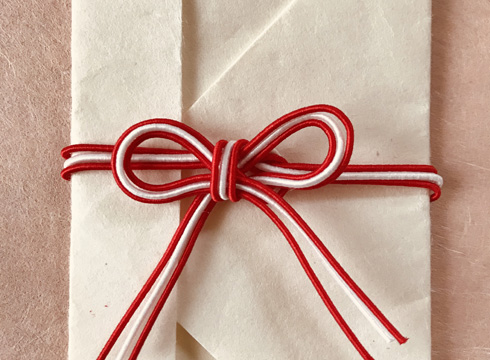Welcome to World of MIZUHIKI
Want to connect people around the world with Muzuhiki

What it means to protect the Japanese traditional handcrafts, is to utilize it in a way that fits our modern lives. Incorporating little by little and adjusting with the change of time to pass them on to the coming generations. Through these workshops, I hope people can experience Japan’s traditions and cultures closely in their daily lives and appreciate the enrichment that Mizuhiki can bring us.
About Us
Our goal
To promote the Japanese traditional art and culture, Mizuhiki not only in Japan but also globally.
What we do
1. Design and create Mizuhiki art works.
2. Hold Mizuhiki lessons , workshops and talk both in person and with Zoom online.
Greetings / Introduction

Using My Own “Colors” …
My encounter with Mizuhiki was in Kanazawa city, where we had moved because of my husband’s work. All the colors and textures were overwhelming; I was mesmerized by all the different variations of Mizuhiki. Using assorted color and texture combinations allows personalities to shine through each workpiece. The ability to choose between these components and how one color or texture difference can create something completely new, I think is what makes Mizuhiki charming and fascinating.

Widening the Worldview using the “WA” of Mizuhiki
I started the program “WA-Style Japanese Modern Mizuhiki” because of my passion to promote the fascinating traditions and culture of Mizuhiki; to not only within the borders of Japan but also to other countries. The “WA” in “WA-Style” includes four different meanings. The word “WA ” represents the traditional Japanese artisanship, and it also can be translated as “WA ” the circle that expands as you meet others who also practice this form of craft whether it is from learning or teaching. “WA ” can also be the exclamation of amazement in both Japanese (wa-!) and English (wow!), signifying how Mizuhiki can be incorporated in not only the lifestyle of Japanese but all over the world. This is how the name of the program “WA-Style” came to life.

Self-Identity as a Japanese
–Thinking About My Own Roots-
Due to my father’s work, I lived overseas during my childhood. I had many opportunities to converse with people all over the world and gained the international perspective that made me think about my self-identity now as an adult. I found myself by understanding more about Japan and the color (identity) of myself as a Japanese. Through Mizuhiki I gained new ways to think about Japan, Japanese identity, and the culture/traditions of Japan.

“What it means to protect the Japanese traditional handcrafts, is to utilize it in a way that fits our modern lives. Incorporating little by little and adjusting with the change of time to pass them on to the coming generations. Through these workshops, I hope people can experience Japan’s traditions and cultures closely in their daily lives and appreciate the enrichment that Mizuhiki can bring us.”
What is MIZIHIKI?

The Origin of Mizuhiki
The Origin of Mizuhiki dates all the way back to the Asuka Period. It is said that when Ono no Imoko (the appointed envoy to Sui) returned to Japan, the Sui envoy that came along brought gifts that were tied and decorated with red and white hemp strings. From then on, all the offerings to the imperial palace were tied with red and white strings. From the Muromachi Period, the Mizuhiki was used in replacement of the hemp strings. Mizuhiki used to be a luxury item but after the Meiji Period and until this day it is commonly used by the general public.
The History of Mizuhiki
As paper became the replacement of annual tributes, the Japanese paper “washi” making became a business in Iida City, Nagano Prefecture. One of the reasons artisans gather here to make washi is because the plant used to make paper, the Kozo Plant (a deciduous tree in the Mulberry Family) can be easily obtained in the Nagano Prefecture. From the Edo Period, with the technology to make stronger paper began the mass production of Motoyui, a top knot accessory used for tying up hair. Iida Motoyui elevated Sakurai Bunshichi’s brand “Bunshichi Motoyui” and popularized it throughout Edo and Tohoku Region. After the Meiji Period, people were free to cut their hair short and the need for Motoyui drastically declined. Iida then changed from the direction of Motoyui to creating and mass producing a durable and lustrous brand of Mizuhiki.


The Current Manufacturing Places of Mizuhiki
About 70% of the Mizuhiki made in the country is from Iida City, Nagano Prefecture. Fukuoka City of Fukuoka Prefecture, Iyo City of Ehime Prefecture and other cities contribute to the rest of the Mizuhiki manufacturing.
The Making Process of Mizuhiki
Mizuhiki is made by taking a koyori (paper strings/yarn) made with washi (Japanese paper) that is coated with starch for strengthening and then wrapping it tightly with all kinds of colored fibers and film. It is then dried after treatment for shine and trimmed to about a meter’s length. Even though the manufacturing process is all mechanized, the factories must still be maintained at the temperature of 40 degrees Celsius to make the Mizuhiki. There are barely any companies making Mizuhiki by hand nowadays; there is three companies that do the starch (nori) coating by hand and only the Nonomura Mizuhiki Store in Iida City hand dyes their Mizuhiki.

Considering the Situation of Gifting…
The Different Meanings of MIZIHIKI Knots
The water cools down, purifies and is said to have the ability to repel evil spirits.
When tying Mizuhiki on a gift, it is to add on the good omen for the receiver.

Musubi-kiri
(Binding Knot)
This knot can be used in many situations: such as celebrations, funerals, and other religious ceremonies. The Musubi-kiri is a tough knot that is hard to undo and is also called the Ma-musubi or Hon-musubi. It means “hope it does not happen again” and is often used for weddings, visiting the sick and when there is a tragic event.

Awaji-musubi
(Awaji Knot)
This is another knot that can be used in many situations: such as celebrations, funerals, and other religious ceremonies. Like the Musubi-kiri, once the knot is tied it becomes exceedingly difficult to undone; it is called the Awaji-musubi because of the shape of the knot. By pulling the two ends of the Awaji-musubi it becomes tighter and signifies “the wish to be together forever…” Like the Musubi-kiri it also has the meaning of “hope it does not happen again” and can be used to express both congratulations and condolences.

Chou-musubi
(Butterfly Knot)
This knot is used in the events such as celebrating newborns, education success, birthdays and opening of new businesses. Also called the Hana-musubi or Ribon-musubi, signifying “happy every time it happens” and is used to celebrate many occasions.

Hiki-musubi
(Ring Knot)
The completed knot looks like a circle and symbolizes unity. It is also called the Wa-musubi and is usually used for weddings.

Kanou-musubi
(Come True Knot)
The Kanou-musubi has a traditional meaning of blessings because the knot is shaped like a “口” and “十” which spells “叶” in kanji and means “wish come true.” This knot is often used like amulets to wish for good fortune or protection.
Everything in Mizuhiki has a deeper meaning
The Color and Number of Strands in Mizuhiki
Mizuhiki has flexible movements and can be tied into the shape of a ring. It symbolizes connecting people together and is often used on giftings or envelopes. The meaning can differ with combinations of color and number of strands.
Color of Mizuhiki
Different color combinations of dyed Mizuhiki are used depending on the nature of the event.
Congratulations are represented with combinations like red and white, gold and silver, or red and gold. Condolences on the other hand use combinations such as black and white, silver and white; yellow and white combination is also used in some regions. Blue and white was used for Buddhism memorial services in the past but is no longer commonly used nowadays. Knots are arranged in a way so that the darker colors are on the right-hand side and lighter colors on the left-hand side.
A special red and white color combination is used for celebration only in the royal family; chances for the public to see them is extremely rare. It is said that the red Mizuhiki for the royals are treated to have an iridescent sheen that changes to different lightings.
Number of Mizuhiki
As of now, it is most common for knots to have three, five or seven strands. 5 strands are the fundamental based on an ancient Chinese philosophy called “The Five Element Theory”, it is said that everything in the world is made from the five elements and all the colors are also made from the basic five colors. Knots made from three and five strands are called Kantan-musubi and knots made with seven strands are the more complicated variations of the five strands called Teinei-musubi. Another type of knot uses ten strands by overlapping fives to symbolize “the coming together of two families and them joining hands”, this is used not only for weddings but also some funerals.
NEWS
Mizuhiki made by a student living in Beijing was featured in a TV program.
Aki’s husband is the head chef at the official residence of the Embassy of Japan in Beijing.
He serves dishes accompanied by Mizuhiki art works Aki has created allowing guests from various countries to enjoy traditional Japanese culture with both the eyes and the palate.
Mizuhiki is Japanese traditional paper cords, which are said to have power of getting rid of evil spirits and building good and firm relationship with your family and friends!
At ‘Tenshido”, located at Narita Airport Terminal 1, Mizuhiki magnets, hair clips, earrings and coasters are available.
The store is located on the floor after immigration procedures. If you are looking for something special from Japan, please visit the store!
We had planned to hold a mizuhiki exhibition on 7/30-8/1.
However, due to the rapid increase in the number of infected people, as well as the fact that some of our
members’ family members have been infected, we would like to postpone the event to 10/1-3.
https://english.kyodonews.net/news/2021/12/eebc8b549025-feature-mizuhiki-japanese-knot-tying-giving-connection-to-cultural-heritage.html
I am so glad that we had a chance to talk about our beautiful Japanese tradition Mizuhiki.
The article was also posted on The Japan Times.
https://www.japantimes.co.jp/culture/2021/12/30/general/mizuhiki-knot-tying/
Thank you Ms. May Masangkay for sparing your time for many interviews and visiting our Mizuhiki exhibition to see my artworks. I am grateful. I really appreciate it.
Today, the first anniversary of the Tokyo Olympics and Paralympics are being celebrated. As a part of the cultural introduction by the metropolitan gov’t, we have made a laurel leaf crown with about 200 leaves tied with Mizuhiki is on display.
https://after1year.jp


It was over a year ago,
an interview I received from Kyodo News was published in The Japan Times.
This time, the article was published in an English textbook! We are very honored that about Mizuhiki, Kyoko Omoda, the representative and the Canadian student Meg will be used in the educational materials!!
Today is the entrance ceremony for many universities. It is an English textbook for university students, and it will be a good opportunity to let them know about mizuhiki.
I’d like to express my deepest gratitude to May Masangkay for writing this article.
REPORT

The Mizuhiki Research of Kidz Participants
Mizuhiki ambassador Yukari Joe told me a lovely story about her student.
She is an elementary school girl and wrote a research report on Mizuhiki. I was so impressed she wrote she wants to let her friends and also other people know about Mizuhiki!!
Online lessons are available with Zoom.
Zoom online lessons in English are available. For more information contact us!
It usually takes more than a week to send Mizuhiki and other materials so that your early application is recommended.
When you have a chance to visit Japan, please stop over for in personal lessons!!






